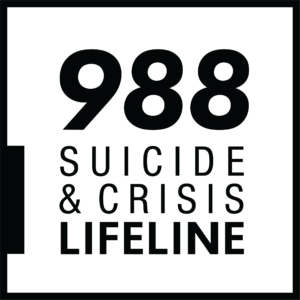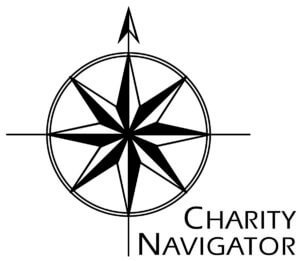Even after 13 years, I miss him. When my partner David died by suicide in 2009, I was an early childhood educator living in Providence, RI. During our relationship, David would tell me of his struggles with disturbing thoughts, feelings, and emotions that overwhelmed him and upset him. He shared that people had left him when they learned about his struggles. He told me that he pushed people away so they didn’t have to witness his struggles. At times, he felt abandoned though, for a majority of the time, he thoroughly enjoyed life. When not struggling, David was pure joy with the most delightful, warm, and welcoming smile. He was beautiful in physicality and in spirit. His suicide left me quite lost, confused and grief-stricken. My own emotions would uncontrollably erupt, unexpectedly intensify and then ebb to numbness I felt alone in life, alone in my loss. As one half of a relationship as gay men before marriage equality, people lessened our relationship and, then, lessened my connection to my lost half and to my grief.
After my loss, I found Samaritans traveling by train to Boston to attend SafePlace meetings – a healing space for people who have lost a loved one to suicide. I found what I couldn’t find elsewhere – connection and community – the first bricks in a new foundation for healing. I began questioning all that I knew and all that I didn’t know. Why, for example, as an educator, did I have no idea how to help David? Could I adequately support students if I couldn’t help David? What could I have done differently? Why do we allow such mental health stigma to continue? David was an out gay man – proud and strong in that part of his identity. He died with his mental health struggles still in the closet. Why?
In the midst of my pain, my sister Laura offered a hand to help pull me out of my swamp of sadness. I left the classroom as a teacher and I moved into her home in Denver. For six months, I had a space, a place, and the gift of time with my sister, her husband, and her two boys. One nephew was 5, the other 3. So, while my sister, a pilot, flew, and her husband, a teacher, taught, I was uncle, as well as nanny. In the mornings I bundled up my younger nephew, Coe, into a carriage and we would walk Milo, the older nephew, to school. Coe and I would then head to a coffee shop where I would read and he would scribble and draw and giggle. These were glorious almost perfect and most necessary days for me filled with some much-needed simplicity, and more critically, care and connection. These two boys gave me hope and joy and purpose just from their being. I learned so much. They knew nothing or very little of my true grief, and they still provided exactly what I needed to begin to heal.
I eventually developed a new plan, a new purpose, building on the foundation started with Samaritans. As a lifelong learner I needed answers so I pursued a higher degree- for those answers as well as to process my own grief and to find meaning in my loss. I needed to understand suicide, mental illness, and grief. I needed to know what I didn’t know. My mantra, perhaps just fervid hyperbole, was “no one else will die by suicide.” This mantra provided purpose and intention for my grief. Once I completed a PhD in psychology, with a focus on education and research, I applied my energy into building emotional intelligence and well-being skills within school communities. I knew I needed to be in classrooms integrating my new knowledge with my experience as an educator.
As a classroom teacher, I had built reading, writing, math, and friendship skills for my students and, hopefully, helped to build a passion for learning. As children grow, repeated instruction, explicit application, as well as thoughtful support and care all assist in the building of skills toward mastery. My theory, later affirmed with further studies and training, was to build emotional intelligence skills such as coping, emotion regulation, self care, and overall well-being in the same way as we build academic skills. I started this new work and it eventually expanded to every grade level, from early childhood to college-level. I found other communities to support such as Camp Kita – a non-profit summer camp in Maine for young people who have had a loss to suicide. I currently also lead peer grief support groups for individuals who have lost a loved one to suicide through the organization Coping After Suicide.
Throughout my journey, I continue to honor my loss and David’s life. Grief is now a strength for me to share with others who have had a loss. Though working in schools was fulfilling, I needed to broaden as well as deepen my efforts into the world of suicide prevention. In just the last few months, paths previously unseen opened and Samaritans crossed mine again. Now that I am working for Samaritans, it feels full-circle, a journey that a friend called my Hero’s Journey. I am no hero, just a man who strived to make sense out of something that made no sense. I also know that my loss to suicide continues to be a mystery never to be solved. Life is not an Agatha Christie novel with a pithy detective to provide answers. Instead, we learn to live with what we have and what we know. What I have solved is that where I am now feels right and purposeful.
I’m lucky in so many ways. My nephew Milo graduates from high school this year and my nephew Coe will soon be driving. I am lucky to have my nephews and my nieces and my sisters and my mom and my father’s spirit and my friends. They cheer me on, make me smile, challenge me when needed, teach me, as well as provide me support even when they’re not sure where my next leap might lead. I’ve been the recipient of some breathtaking and potent love and support over the years. I have learned so much and grown so much from those first days of my loss. I had no knowledge and no ability to help David in the way he needed when he was alive. I can now help others to navigate their struggles, pain, and grief as well as celebrate their joys and successes. I know more.
There are days when I think I’d rather have David sitting right beside me. Since he is physically not, I live the lessons of his love and his life and his death. I live the lessons of my own journey and my loss. There is a beauty to it all. David will never know the profound impact he would have on this world. Because David lived boldly and then died by suicide, I have a deeper passion, compassion, sympathy, empathy, and care for the individuals I support and encounter each day. I’ve learned that suicide is not a selfish act. Mental illness is real. Grief is not a moment but a process. I’ve learned that David’s emotional pain was probably more than I could endure. I now know how much pain he was in and how strong people are who suffer in it.
The deepest truth I’ve learned began with Samaritans. Those foundational bricks didn’t become a walled enclosure but developed into a new home. It’s a simple place where I can invite others to be heard, to feel safe, to build community, to find compassion, and to discover that a hug might be just enough. David never asked for more. His truth, the truth is that simple. Samaritans gave me this foundation and I now attempt to apply my learning to my work and in my life each and every day.









